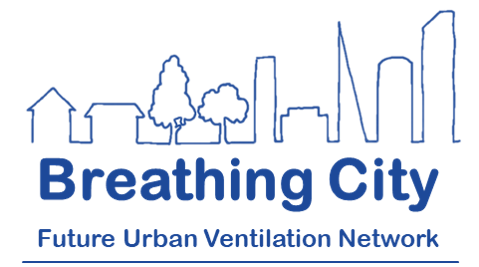On 28th September 2022, Breathing City (FUVN), TAPAS and ICP-ERG jointly hosted an in-person event in White City Campus, Imperial College London, which engaged discussions from academia, industry, and public policy around ‘Understanding IAQ for healthy buildings in a net zero world’ and focussed on early career researchers and indoor air monitoring studies. We heard presentations across a range IAQ topics including monitoring, characterization methods, ventilation studies, modelling, IAQ health assessments and behavioural studies.
The talks were not recorded but many of the speakers were able to share their slides which you can access via the links below.
- Dr. Liora Malki-Epshtein: Rapid IAQ monitoring at large scale events: lessons from the Events Research Programme. Slides here
- Abigaël Souillier: On-site characterization method for emerging semi-volatile compounds emitted by materials – Application to the identification of emissions from recycled materials. Slides here
- Dr. Evangelia Chatzidiakou: Developing a novel methodological framework for estimating school-based exposure in health and modelling studies Slides here
- Klaas De Jonge: Time-resolved DALY for instantaneous IAQ health assessment. Slides not available to the public
- Dr. Emily Kruger: A study of the ventilation on an inter-city train carriage. Slides here
- Dr. Corrine Mandin: Indoor air quality: rising issues and future challenges. Slides here
- Dr. Stavros Bontitsopoulos: Evidencing the effects of HEPA filters in naturally ventilated classrooms. (Presented by Dr. Henry Burridge). Slides here
- Sara Mohamed: Monitoring carbon dioxide as an approach to managing ventilation to mitigate COVID-19 in prisons setting. Slides not available to the public
- Luiz Miranda: Micro-sensors for indoor air quality: from deployment to data treatment. Slides here
- Sophie Pott: Technical and Behavioural Challenges to Ventilation in Hospitality Venues. Slides here
Plenary speaker, Corinne Mandin who headed up the French IAQ Observatory, talked on the rising issues and future challenges of indoor air quality with increasing urbanization and a decline in biodiversity. Corinne emphasized the importance of IAQ monitoring and the challenge in identifying the key, emerging compounds. She also highlighted that an integrated approach is needed to incorporate other environmental factors such as thermal comfort, acoustics and light, particularly if retrofitting becomes more popular. The current pandemic has helped to raise awareness of IAQ but a paradigm shift is needed to tackle research, technical and communications challenges of IAQ.
Our second plenary speaker, Associate Professor Liora Malki-Epshtein, talked on rapid IAQ monitoring at large scale events and her teams’ involvement in the events research programme which was one of the UK government’s Roadmap Reviews for moving out of the pandemic. The aim of this project was to better understand the risks relating to transmission at live events, particularly airborne transmission, and its relation to ventilation strategies. The findings from this study were instrumental to inform decision making and contributed to large, mass-participation events in the UK being re-opened following their closure during the COVID-19 pandemic.
The day ended with an expert panel discussion made up of experts in the field of ventilation and air quality. They focussed their discussion on indoor air quality in a net zero world and what this means in the current energy crisis. The session was chaired by Henry Burridge, senior lecturer at Imperial College London and included:
- Liora Malki-Epshtein, Associate Professor in Environmental Fluid Mechanics, University College London;
- Ben Barratt, Reader in Environmental Exposures & Public Health, Imperial College London;
- Cath Noakes, Professor of Environmental Engineering for Buildings, University of Leeds and FUVN lead;
- Corinne Mandin, Head of the French Indoor Air Observatory;
- Simon Jones, Head of Air Quality, Ambisense.
The panel opened by addressing the imminent crisis of rising energy costs as winter approaches and questioned how we can find balance between ventilating our buildings and conserving energy, particularly as the public’s interest in ventilation is starting to wane. It was debated if clean air had to be provided to buildings all the time and how energy could be saved by reducing energy usage in buildings when not in use. This could help to save energy, depending on the age and state of the building, but we must take into account how this will affect building maintenance such as mould growth. It was also acknowledged that the current energy crisis should be separated out from net zero as we need actionable solutions for this winter (practical guidance, risk assessments etc) compared with a long-term plan for net zero (retrofit, design of systems, systemic thinking, update building regulations). The panel then discussed how air pollution plays a role in how we ventilate our buildings and the importance of focussing on emissions rather than pollution. A balance must be struck between ventilation and pollution ingress to the building. When we open our windows, high pollution may come in, therefore we need to concentrate on reducing these emissions. The panel wrapped up by emphasising the importance of including the health community in a UK observatory and highlighted the value of evaluating health impacts and economic costs, as this information is essential to make progress.
written by Dr. Kat Roberts from the TAPAS network


